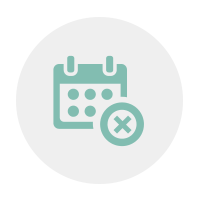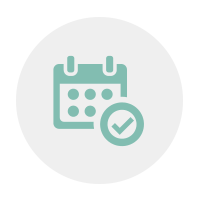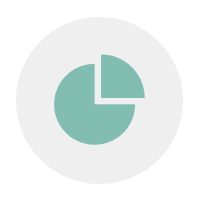Healthcare Dashboards: 5 category of performance metrics essential to measure
As a hospitals’ CEO or a doctor running your own practice, it’s highly imperative that you understand the role of data measurement and analysis towards effective decision. To simplify the process of data visualization and analytics, healthcare dashboards have come into the picture.
What are healthcare dashboards?
Just like a business dashboard, a healthcare dashboard manages and tracks healthcare information data, KPIs and other essential metrics to analyze the data of a particular healthcare department, a specific medical process in a hospital, or a private clinic. It is a health-tech utility to simplify data visualization in the healthcare industry to measure the overall performance.
This data is immense and valuable. The sheer amount of data generated by a business as complex as a hospital or medical treatment facility can be staggeringly overwhelming. So, if you’re not monitoring your data and measuring the key metrics that drive your business, it’s imperative you start doing so as quickly as possible in order to better understand the overall health of your organization.
At the same time, it’s important for your hospital not to start tracking every single metric possible. Start small and identify the metrics you think are most vital to the success of your business or the metrics you feel represent the opportunities to improve upon your healthcare business. These metrics can be measured in a dashboard.
Generally speaking, the data that is most important, and thus should appear on your dashboard interface, can be compartmentalized into one of five categories.
Start your healthcare dashboard journey by tracking metrics across these 5 categories
1. Volume Metrics

This data refers to the flow of patients to your facility. This includes:
- Number of patients by department, by specialty
- Time of appointment and length of visit
- Tracking origin of and number of inbound referrals
Purpose: Your medical practice is a business, and just like any business, you need to build, maintain, and cultivate your patient base in order to thrive. Tracking these metrics allows you to determine if current marketing and business outreach and development is as effective as the projections made. These metrics also allow you to reassess current service offerings and determine if you need to invest in other areas of expertise or bolster existing lines of business.
2. Revenue Leakage Metrics

This refers to the data related to the flow of patients through your facility with lost income opportunities. This includes:
- Cancelled appointments due to patients not showing up
- Tracking the number of outbound referrals due to unsupported specializations
- Cancelled or rescheduled appointments due to provider unavailability
Purpose: Tracking these metrics helps you gauge the effectiveness of your patient appointment and appointment reminder systems. These metrics also provide similar insight into the need to expand current business offerings as the Volume Metrics discussed previously.
3. Utilization Metrics

This data refers to the patient traffic and consumption of resources generated by each department, specialization, and service provider. This includes:
- Appointments completed per doctor
- Surgeries performed per surgeon
- Appointments scheduled per department and specialization
Purpose: More specialized than the volume or revenue leakage metrics, drilling data down on the dashboard to this level allows you to determine your most requested services and expand your capacity to meet the demographics and demands of your patient base. It also reflects whether all resources at your hospital are efficiently utilized or not.
4. Quality Metrics

This data relates to the effectiveness of your quality, safety, and access initiatives. It is the most extensive data-set that will be tracked on your dashboard. This includes:
- Employee Satisfaction
- Patient Satisfaction and Engagement
- Post-Treatment metrics
- Readmission rates for specific diseases (e.g. heart failure, pneumonia, etc.)
- Clinical outcome rate statistics
- Occurrence of hospital acquired infections
- Clinical error ratios
- Outpatient wait time
Purpose: All the previously discussed metrics intend to streamline and maximize the flow of patients through your business while increasing revenues. However, if you are doing these things without tracking the impact on your employees and your patients, you could be leaving money on the table or losing money due to poor employee performance and unsatisfied patients’ word of mouth. There’s no point in increasing traffic through your facility if your employees aren’t providing high quality healthcare, and these set of metrics help you control quality of healthcare delivery.
5. Financial Metrics

This the data that is more finely tuned and focused on the fiscal performance of your healthcare facility. This includes:
- Revenue generated per doctor
- Revenue generated by department
- Revenue generated by specialization
- Revenue/expenses per doctor/ department/ specialization
Purpose: When drilling down into this data and cross-referencing it against the Utilization Metrics outlined above, you and the decision makers of your organization can better gauge how to increase profitability by expanding your most profitable channels of business.
How are healthcare dashboards useful?
Let’s start with what a hospital CEO’s dashboard is in the context of the industry. A very general definition is that the dashboard provides a digital interface for hospital leadership. The interface gives you at-a-glance access to the data you need to effectively treat patients and run a profitable business.

The hospital CEO’s dashboard’s usefulness lies in the consolidation of data into a single interface that provides decision makers in medical facilities with the following benefits:
i. Increased awareness of variables that impact your business There are a lot of moving parts that can impact the everyday efficiency of your hospital or private medical practice. Much of this data is captured by different individuals and stored on different databases throughout the business. Without a dashboard, it would be next to impossible for you to make valuable strategic decisions over time.
ii. Reduced variations A dashboard allows your team of care providers to identify the causes of patient care variation, replicate the best practices that are working, and in the end standardize processes across your practice to reduce variations in healthcare delivery experience.
iii. Improved ability to identify trends and patterns By centralizing data into a dashboard, your decision makers and leadership can more effectively see the impact and interconnection between various departments. It is also easier to see what is and isn’t working and make changes to the business accordingly.
iv. Increased responsiveness to performance By tracking efficiency and customer satisfaction through the dashboard, leadership and decision makers can reward caregivers that are performing to the necessary standards, provide guidance to those who aren’t, and even make staffing improvements based on patient feedback.
Lets build your hospital’s healthcare dashboard
The above categories, again, are just a guide to help you identify few metrics that are most important to your operation.
The takeaway here, then, is that it’s vital that your dashboard tool places the right data at your fingertips so that you can better understand and manage day to day operations of your healthcare facility.
Whether you’re a CEO of a hospital or you own your own private practice, data must inform your every business decision.
Once you’ve identified the right data, if you need help building an effective dashboard for your healthcare practice, Kays Harbor Technologies has the experience in the healthcare industry that can help you to create the most effective technical solution. Track your revenue, monitor the performance of your medical team, assess your service offerings and identify opportunities to expand or streamline your business.
Whatever information you might need, our team of professional and experienced programmers can build an interface that is both designed for your needs and 100% HIPAA compliant.
Contact us today to schedule a meeting with our team and let us know what we can do for you.


